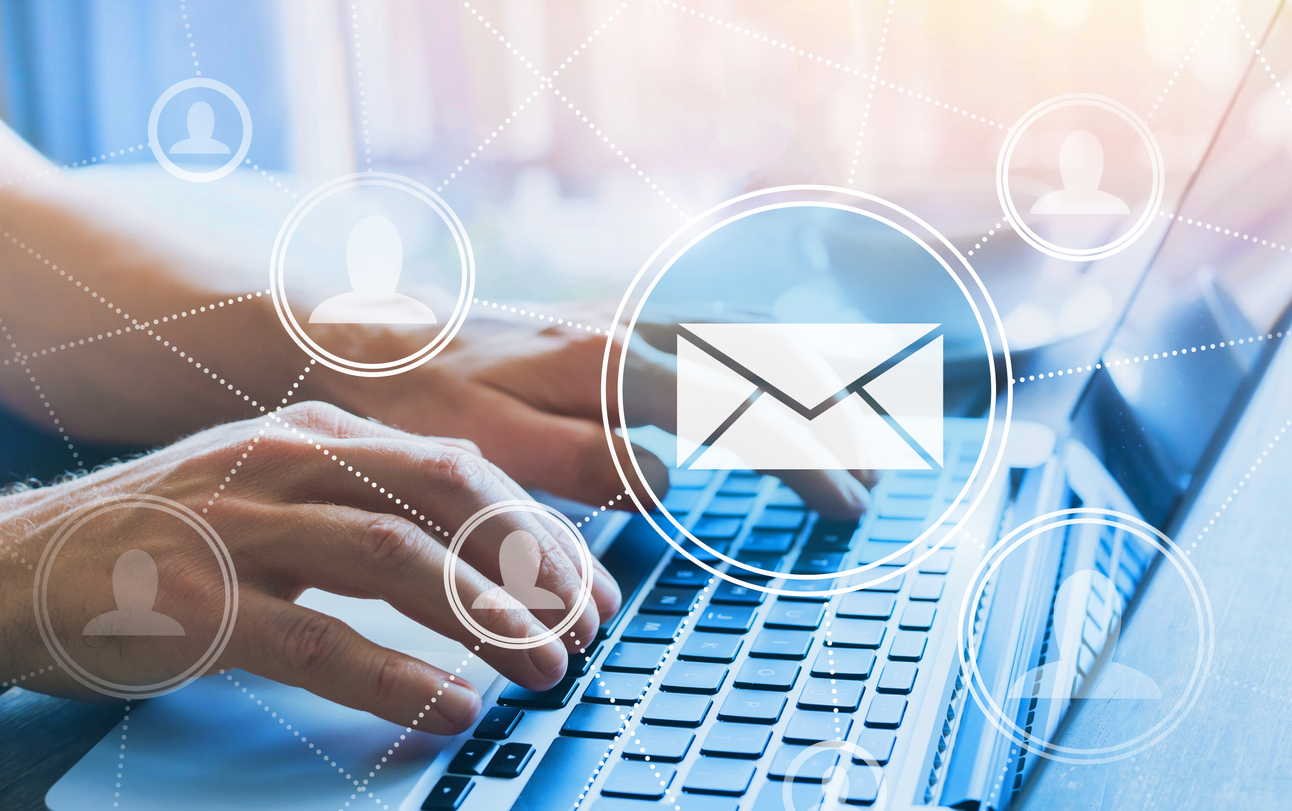
Email marketing is effective only if you can tap on the right pulse of the subscriber. You must adhere to the email marketing triad—that is, sending the right message to the right person at the right time. Now, just imagine you have to pick up individual subscribers, draft separate emails for them and then send them one by one. Tedious, right? That’s where email automation comes into picture.
It helps to send behavior-based emails triggered according to the subscriber activity, thereby enhancing the user engagement and conversions. It not only saves time; it also facilitates the creation of more targeted emails that perform better. Automated emails are sent in real-time to specific subscribers who meet some pre-defined criteria set in the email service provider, or ESP.
Before we delve deeper into the emails included in an ecommerce automation workflow, let’s understand the factors that influence the performance of your automated emails.
- Customer journey
- The competence of your ESP
- Deliverability score
- Segmentation parameters
- Analysis of the subscriber activity
- Lead capture forms and landing pages
You ought to work on these parameters to ensure successful email automation workflow.
That said, we shall now move on to the different stages in email automation.
1. Onboarding Stage
Whenever you get new subscribers signing up to your emails, you should make them feel welcomed and introduce your brand. Include important information about your products or services in these emails and encourage them to provide relevant details that would aid personalization.
It is recommended that you send a series of welcome emails that give the subscriber a clear idea about what your company is all about.
Take a look at how Office welcomes the subscriber with three consecutive emails.
The first email welcomes the subscribers and shares their unique selling propositions, or USPs, which would make them look forward to knowing more about the brand.

The next email showcases their products and entices the subscribers to make a purchase.

The last email of the series asks for the subscriber’s birthday. They would probably use this information to send a discount coupon on that day.

Note: With the advent of GDPR and strict implementation of other spam guidelines throughout the world, it has become imperative to have a double opt-in method to confirm the email addresses of the subscribers whenever they sign up.
Here’s a nice example by Macy’s to inspire you.
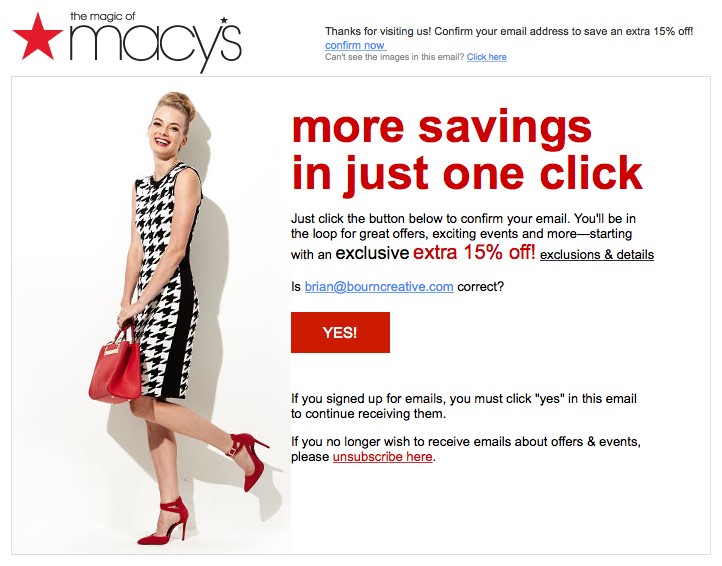
2. Lead Nurturing Stage
Once the prospects exit the onboarding stage, they can now be referred to as marketing qualified leads and moved to the lead nurturing stage. In this stage, the leads are informed about industry-related news and encouraged to make a purchase decision.
Email marketers should keep track of the engagement rate of the subscriber at this stage and make sure that your emails provide value to them and do not get boring. Analyze the open rate of these emails and segment your subscribers accordingly.
Send out product specific emails to subscribers who have expressed interest in your emails. Others who do not open your emails and are not yet able to make up their mind should be sent nurturing emails on a broader level with more relevant subject lines. Look at the number of subscribers who are visiting the order page from your email campaigns in order to determine their buying potential.
Here’s an example of a nurturing email sent by Clickz. It is concise and highlights all the important services that the subscriber would be interested in. They have also shared the link to their lead gen packages.
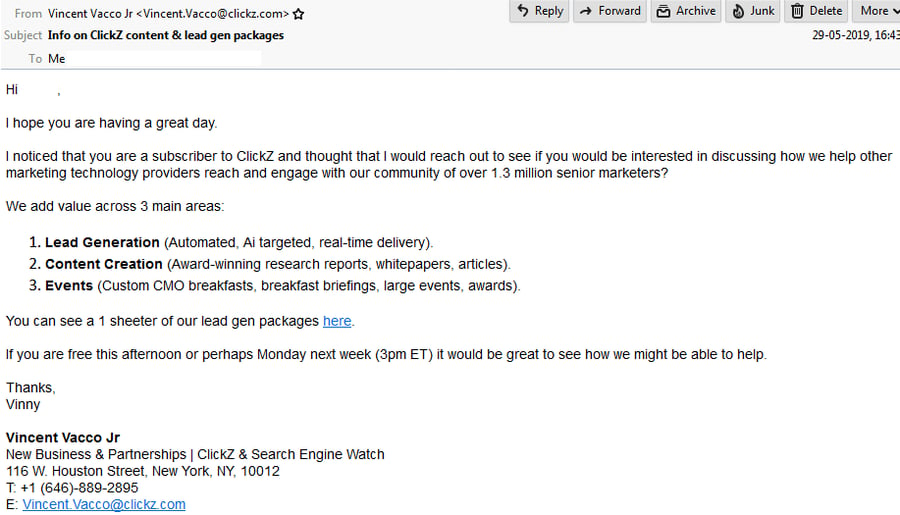
3. Sales or Promotional Stage
The sales, or promotional, stage comprises of sending promotional offers that would work as a gentle nudge to the customers to convert. You must incentivize the subscriber with an attractive deal. It’s a good idea to display customer testimonials that would instill a sense of trust and encourage them to make the purchase.
Casper employs this strategy in their cart recovery program. The clear CTA buttons and the testimonial make it a winning email campaign.
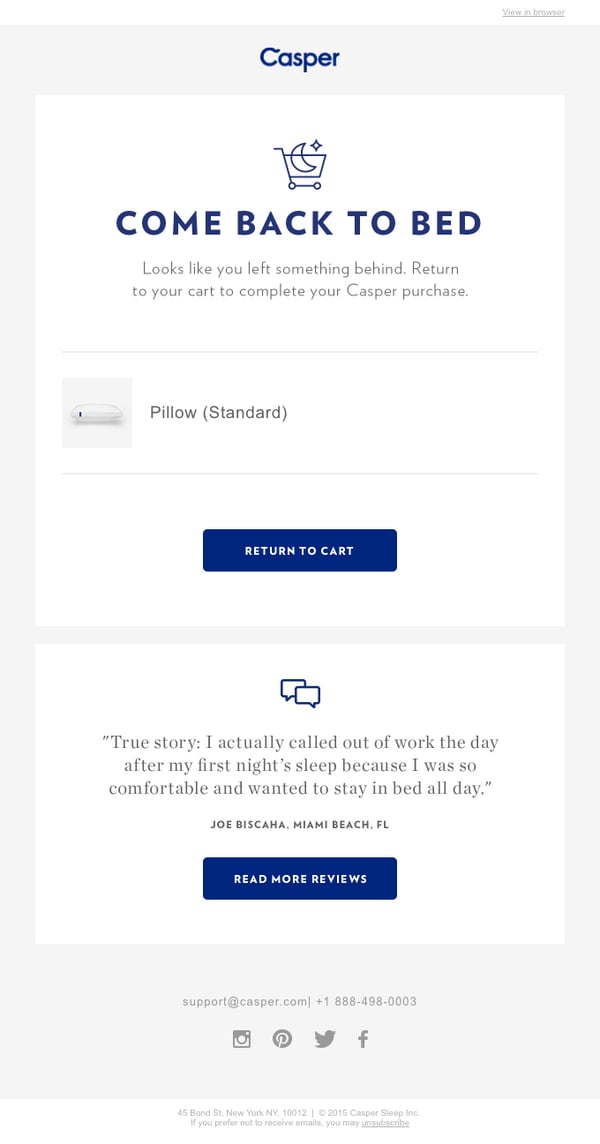
The promotional stage also includes holiday email campaigns that prompt prospects to splurge and make an impulsive purchase during the occasion. Offer a lucrative deal that matches the vibe of the day like this Father’s Day email by Jeni’s Splendid Ice Creams does.

You can even create a sense of urgency in these emails by putting up a countdown in the email. Butlin’s sends a nice countdown email to promote their travel packages with lowest price guarantee.
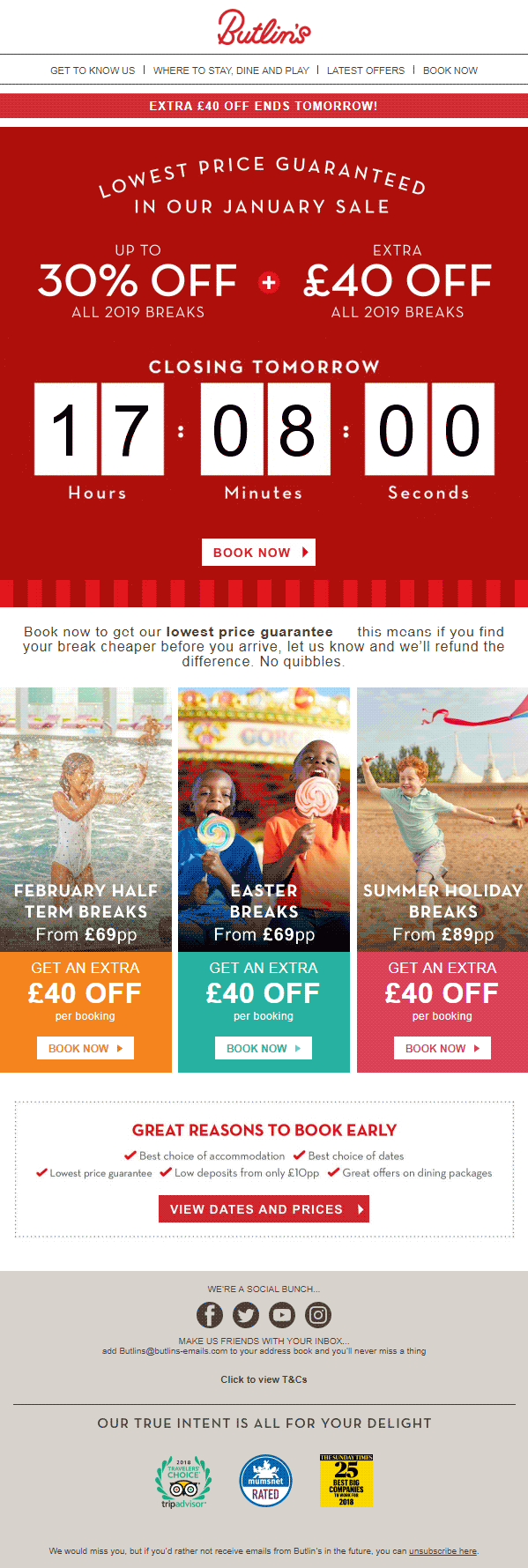
4. Post Purchase Stage
Email automation allows marketers to follow up with customers, even after they have completed a purchase. Doing so will make the customers feel special and build a better relationship with them. It will create an impression of a credible brand and let the customer know that you care about their feedback.
Consider this stage as the nurture stage for customers and try to build customer loyalty through these emails. The objective of post purchase emails is to pull in brand evangelists and increase the lifetime value of the customers. It also helps to cross-sell your products and retain the existing customers.
Just make sure you do not end up sending too many emails in this stage. We strongly recommend that you provide a link to the preference center so that the customer can adjust the frequency of receiving these emails.
Have a look at this example by Code Camp. They have expressed gratitude to the customer and subtly asked him for a feedback. The bold CTA and signature at the end reinforce trust in the customer’s mind and works as a cue to trigger action.

5. Re-engagement Emails
You can revive dormant subscribers with a re-engagement email workflow. Based on the reason for inactivity, you can motivate the subscribers by providing incentives, sharing the latest updates on your offering or giving them an option to revise their email preferences. Strive to make the subscriber feel important and give them the liberty to unsubscribe if they are no longer interested in receiving your emails.
To have an effective win-back email marketing strategy, you should determine the parameters to judge the subscriber inactivity. Generally, a subscriber who has not engaged with your emails for six months is considered to be inactive.
Take a look at the example below by Jack Wills. They have offered an incentive to the dormant customer and also talked about their new season collection.
Towards the end of the email, they have prominently placed the unsubscribe button followed by their awesome services like free delivery and next day delivery at a reasonable price.
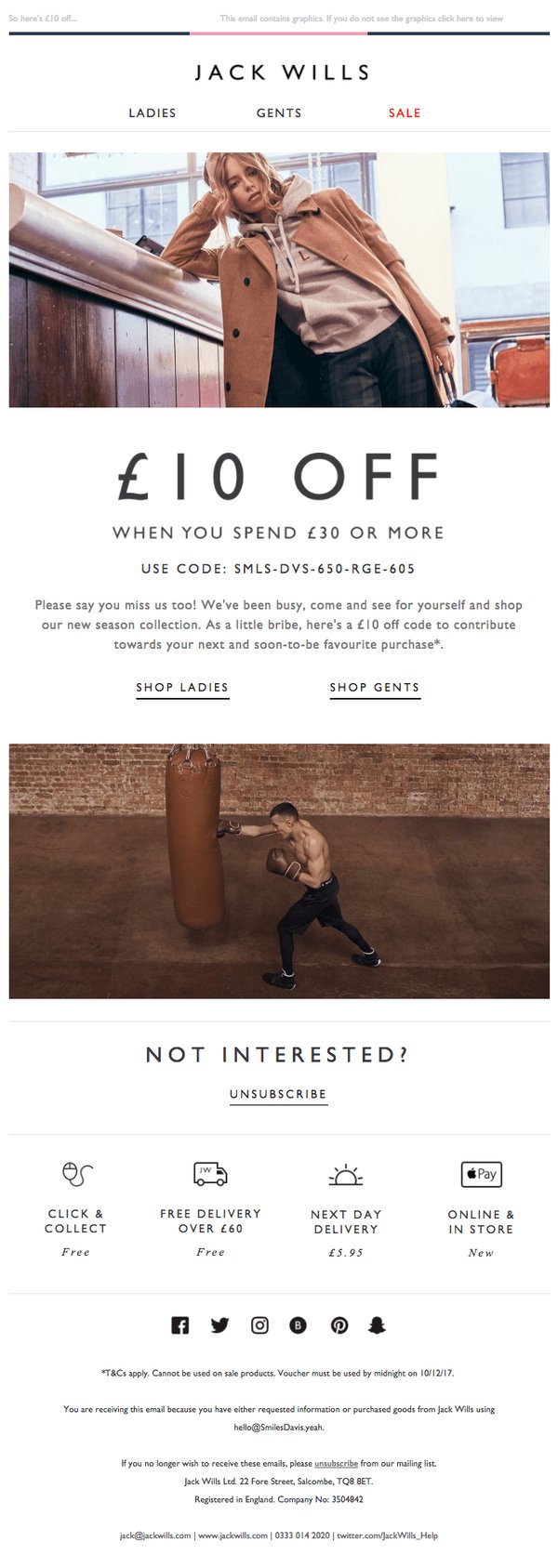
Some Ecommerce-Specific Email Automation Workflows
Transactional emails including shipping information, order receipt, product replenishment details etc. form an important part of eCommerce marketing. Whenever a subscriber makes a purchase from an ecommerce site, you should immediately acknowledge the purchase with an email. Send subsequent emails when the item is packed and dispatched. Such regular email updates keep the subscriber assured that they will receive the order on time.
Another important email workflow for the ecommerce and retail industry is cart abandonment email. For an email marketer, nothing can be sadder than a customer leaving the product in the cart and not completing the purchase. To recover these cart abandoners, you should send a series of cart abandonment emails and get them to buy from you. Just keep in mind that you send the first email within 24 hours of cart abandonment and the next email by 48 hours.
Take a look at the cart abandonment series by ASICS that would compel the customers to make the purchase.
While they have showcased the abandoned product in the first email, the second email features the bestsellers that would draw the customer’s attention and entice him or her to make the purchase.
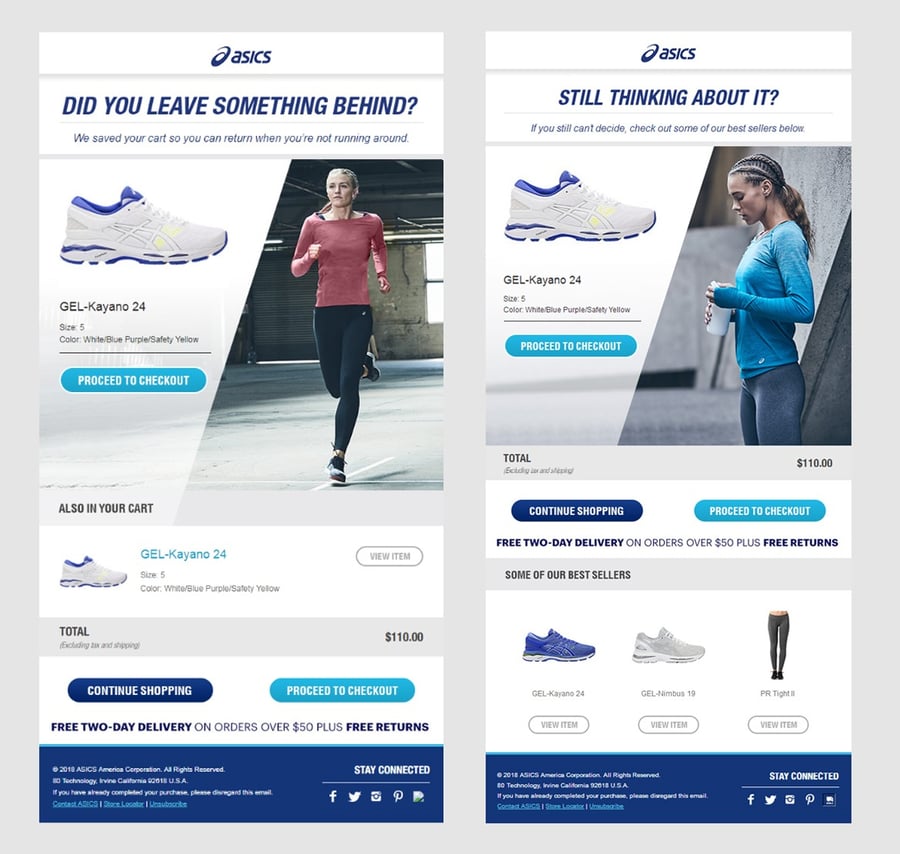
Some Pro-tips to Remember
- Segment your audience before setting the email automation workflow.
- Your “From” name should be recognizable and reflect familiarity.
- Personalize to impart a human touch to the automated emails.
- Consistent tone and design layout are the keys to effective automated emails.
- Have a clear and actionable CTA that inspires the reader to perform the next action.
- Visuals are important, especially when it comes to travel, food, retail or the ecommerce industry.
- Have a suitable alt-text for every visual element in addition to a plain text counterpart for the HTML email.
- Add social sharing buttons to every email so that the email recipient can interact with you on alternative channels.
- Never forget to test the workflow logic and email rendering at regular intervals.
- Stay abreast with the industry trends.
Wrapping Up
Marketing automation can work wonders for your business growth, if done right. No wonder, 51% of companies are already using it.
Have you implemented this tactic in your strategy? What email marketing service are you using? How has it worked for you?
We would love to hear from you.





Leave a reply or comment below